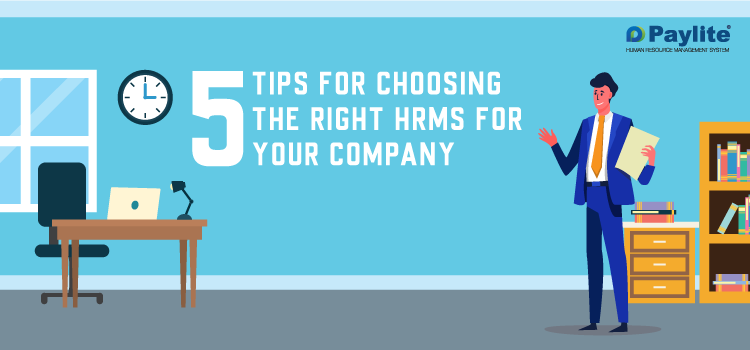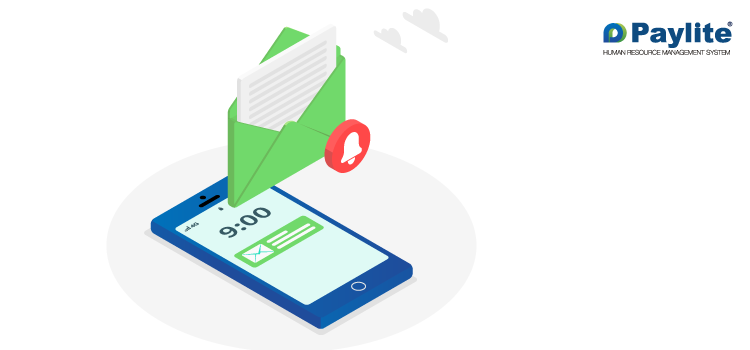When managing the most vital assets of your business- your employees, nothing compares to the effectiveness that a Human Resource Management System (HRMS) brings aboard. Admittedly, workforce management is a daunting task for any organisation. Whether it is a startup with a small taskforce or a multi-billion MNC with huge personnel, chances of managing the entire HR operations without a streamlined technology can be taxing. A good Payroll management Software is a repository for every employee data covering the entire cycle from recruitment, onboarding, training, to until the employee leaves the company. The software provides the management with a bird’s eye view to how personnel are managed and gives a fair idea of metrics to evaluate them on their Return on Investment.
The earlier technologies in HRMS didn’t offer much except transforming the entire manual work and making it virtual or digital. But today, these platforms have come a long way. The technology has become smarter, affordable and equipped the HR to make intelligent decisions on a realtime basis. With the introduction of payroll management software, the process has now become more intuitive and user-friendly saving countless man-hours that otherwise had to be dedicated each day.
Another problem with processing payroll manually apart from the time taken, are the human errors that crop up unintentionally each time. Going back and forth to rectify these errors, not only waste the time of HR managers but also creates negative publicity in the market and a loss of trust from the employee. Working on just processing payroll keeping in mind all the components, leaves the HR team with lesser time to focus on other employee engagement tasks. Therefore, it becomes all the more critical to adopt an HR management system for your business. However, each business differs in function and the software should best complement its processes.
Read to know about the critical 5 things to keep in mind when opting for a Human Resource Management System:
1. Consider the Basics
Understand the basic objective of your organisation and realise the needs that you want the software to fulfill before you go out in the market looking for the right vendor for your business. The staff size, whether the solution will streamline with other processes, affordability, ease of use, are a few of the factors that a business must consider before making the final plunge. Run a product demo with direct stakeholders and involve those who will be managing the system for the best results. Human Resource professionals thrive on efficiency, therefore picking up a solution that is tailor-made to their requirements will yield the maximum output. Ensure to select a system that makes the company prosper and not derail the entire machinery.
2. HRMS Integration Capability & Support
Over the span of time, your business must have used a variety of services for maintaining and collecting data for each payroll process. For the new system to function efficiently, learn of its integration capability to reduce downtime and increased productivity. Discarding outdated technology will only reap in benefits when the new existing system can migrate the legacy data effortlessly without hindering the daily process. Also, evaluate the after-sales Support the vendor provides so that any hiccup with the system does not result in any major complication for the organisation.
3. Regular Updates & Enhancements
HR laws in any country are constantly changing making compliance a more complex process. Missing any deadline or updates can lead to penalties or in some extreme cases can result in prosecution. With compliance laws becoming stricter, HR Managers are required to be on their toes and on top of all important updates. Thereby, implement an payroll software that comes with regular updates and enhancements that factor in all the changing regulations. The software should be quick to adapt to changing compliance laws without haggling with the vendor about releasing each update.
4. Factor in Financial and IT costs
Whether your organisation is small or big, implementing any new software for increased efficiency is a decision that involves a huge financial investment. Consequently, the matter should involve key stakeholders. When implementing any software, there are many hidden costs that a vendor refuses to divulge initially. These costs can prove to be huge and put a dent on your company’s budget if not factored in properly. The IT team should be cognizant of the systems required or the support needed to keep running the software smoothly. Keep all these considerations in mind before finalising the vendor and keep the communication channel open to avoid any ugly pitfalls.
5. Assess User Experience
Determine whether the HRMS will only be used by the HR Managers or is required by other staff members as well. Determine how beneficial it is for end-users and its ease of use for members who do not possess the requisite technical knowledge to achieve its full potential. When employees are using the portal, are they easily understanding the mechanism or is it an added burden for them? Find out the requisite answers to the question before making the final investment.
An HR management software is designed to increase efficiency, productivity and overall profitability of the organisation. It should reduce the workload of the HR Managers and ease their daily process equipping them to focus on other critical areas of company development. A modern-day system is hassle-free and efficient to manage daily tasks smoothly and bring about the holistic development of the organisation.
Paylite® Human Resource Management Software is an end-to-end HRMS system to meet the ever-growing needs of modern-day workplaces. It has helped companies worldwide in increasing productivity by replacing age-old legacy systems. To adopt Paylite HR management software for your business, Book a Demo here: https://www.paylitehr.com/request-demo.html




